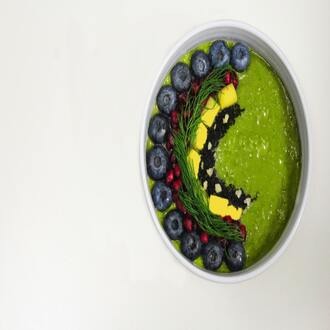Transcription Paleo diet
Once we have analyzed the gluten-free diet, we will proceed to study one of the most popular diets we have found: "The Paleo diet".
The concept of paleo alludes to the so-called paleolithic era, more than two million years ago. The idea on which this diet is based is quite disruptive, it proposes to feed us in a similar way to how humans fed during prehistoric times.
The proponents of this diet argue that our current way of eating is incorrect, that modern human beings are totally ignoring our genetic conditioning factors, that we must return to our primary diet, which has been destroyed with the birth and development of agriculture.
Agriculture incorporated foods that are now commonplace on every dinner plate, grains are an ordinary dish on almost every menu, while dairy is the main source of breakfast for many people.
That said, the Paleo diet argues that these inclusions, the result of technological advances and the natural development of mankind, are the main source of obesity and many diseases today.
What does the Paleo diet propose?
The Paleo diet proposes a diet based on products that were accessible to our ancestors. Avoiding in any way, to consume those that are the result of the natural development of man.
What foods can be consumed?
Can you consume the so-called lean meats; they should be provided by animals that are the result of hunting or that base their diet in a natural way. In other words, farm animals fed on feed are not suitable for this diet.
Vegetables and fruits can also be consumed, always following the logic of the "most natural possible", keeping in mind that the idea of this diet is to get as close as possible to the way our ancestors fed.
Seeds, nuts and fish such as salmon or tuna are also highly recommended to balance this diet correctly.
What foods should I avoid?
In general, nothing artificial or processed. As we said before, cereals are strictly forbidden. Likewise, you should avoid legumes, dairy products, agricultural products such as potatoes, salt consumption, processed sugar, among others. Common sense should prevail here, if it is a food that is not the result of man's hand you can eat it.
As you can see, if you compare the Paleo diet with any other traditional diet you will not find that this is a very strange diet, the concept is striking, but if we ignore the fact that we should not eat cereals and that the meats we seek to consume should be as natural as possible, this would be a very different diet to those we already know.
What are the results of this diet?
The studies that have been carried out on this diet, offer optimistic results. It has been possible to demonstrate, first of all, some improvement in blood pressure. If we take into account that this diet eliminates the consumption of salt in our meals, this result is already obvious.
The diet has been shown to effectively lose weight, which in the end is the general objective for which people undergo a diet regime. Another positive result that has been evidenced is the notable decrease in triglycerides, which are nothing more than the product of a type of fat that is formed from the consumption of foods containing certain oils, for example, butter.
High triglycerides are extremely dangerous because they cause hardening of the arteries, increasing the risk of acute heart disease, heart problems and cerebrovascular disease.
Negative aspects
So far, the Paleo diet is presented as a very positive diet for our health. The truth is that it is difficult for us to find negative aspects, because the very essence of the diet is based on el
diet paleo




